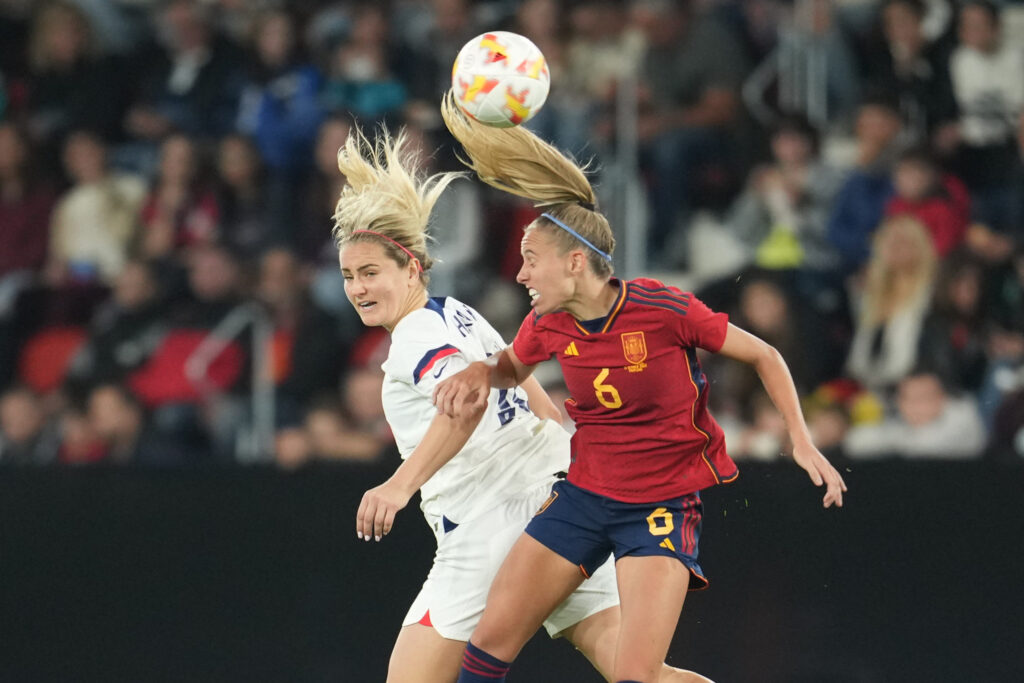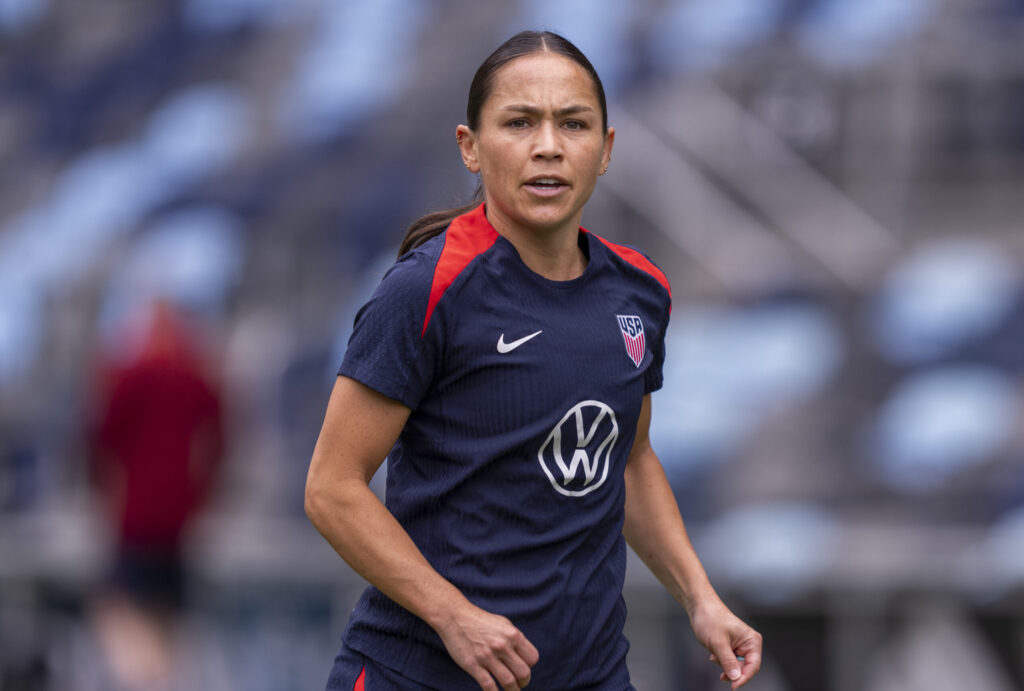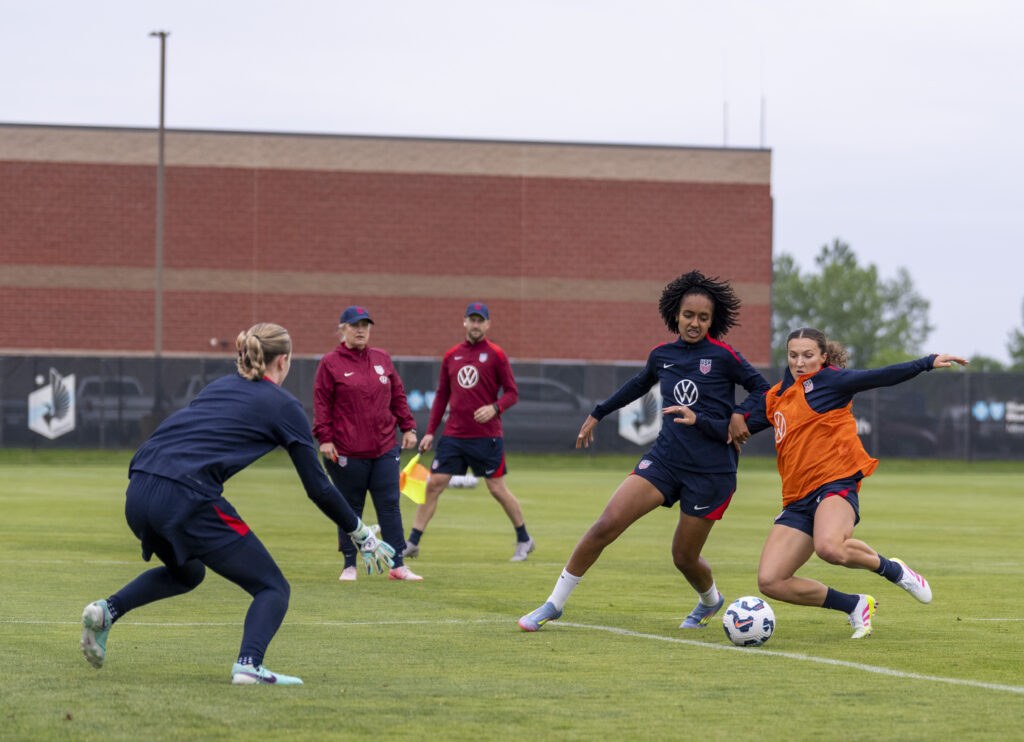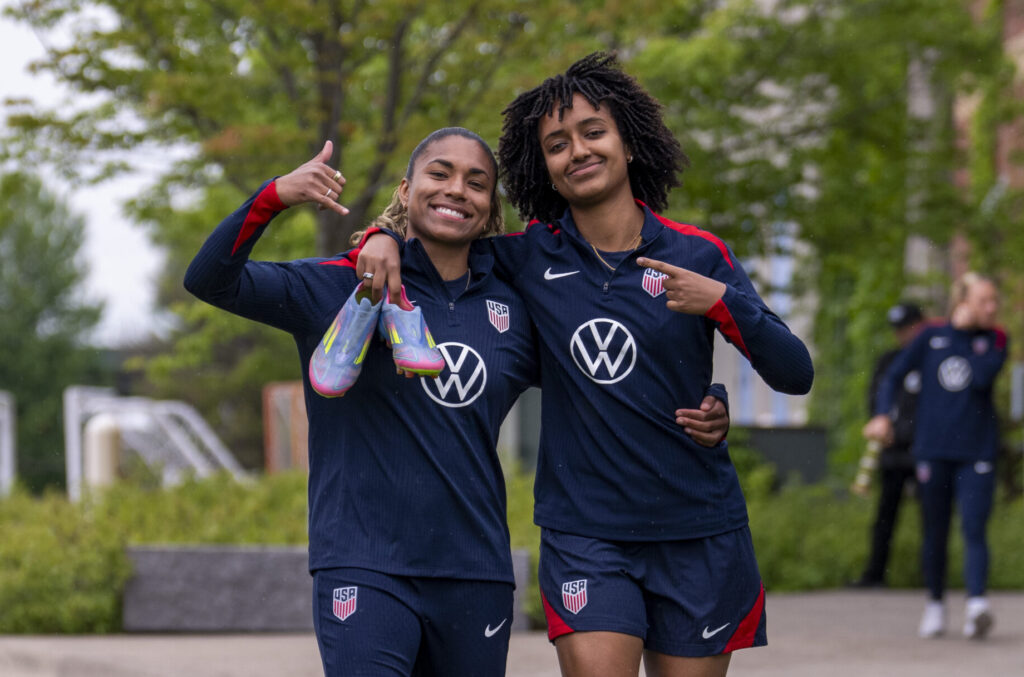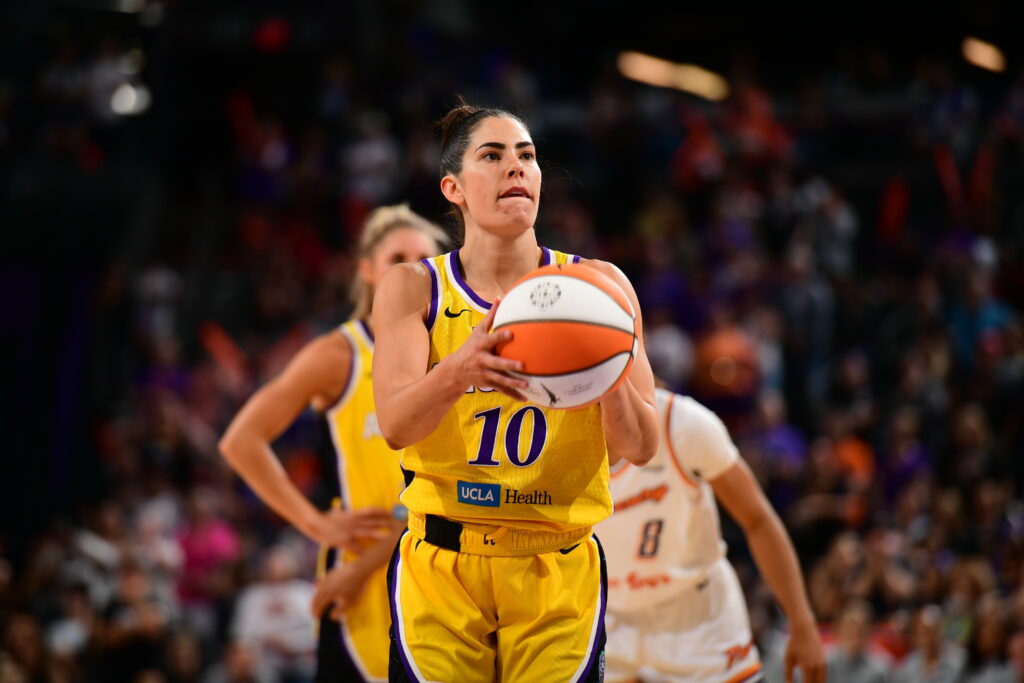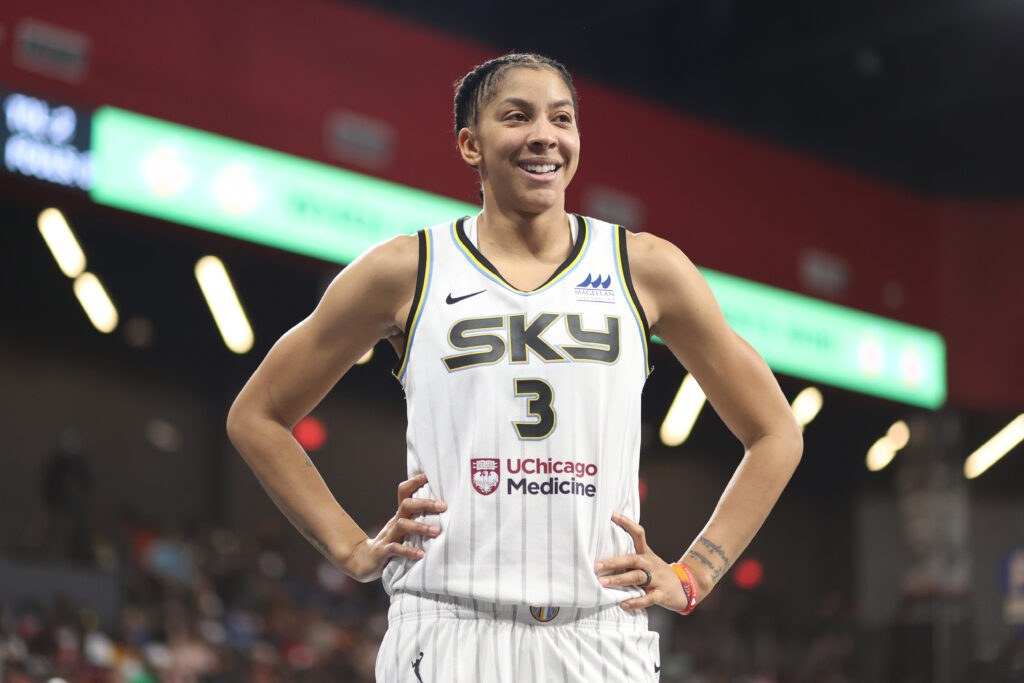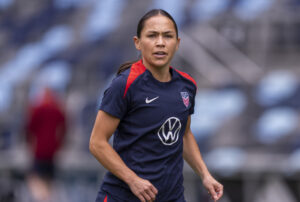Coming into this European swing, the U.S. women’s national team hadn’t lost consecutive games since March 2017. This week, while handling the emotional weight of the Sally Yates report that outlined systemic abuse and sexual assault in the NWSL, the back-to-back World Cup champions watched that streak come to an end with a 2-1 loss to England on Friday and a 2-0 defeat to Spain on Tuesday.
Multiple defensive errors led to four goals conceded during the two-game trip. Even though many of the USWNT’s issues involved the midfield, head coach Vlatko Andonovski made changes only to defense in the starting lineup for the second game against Spain.
In goal, Casey Murphy came in for Alyssa Naeher. On the backline, Becky Sauerbrunn replaced Naomi Girma at center back, Hailie Mace took over at fullback for Sofia Huerta and Carson Pickett started on the left side for Emily Fox, who was ruled out of the Spain friendly after taking a knock to the head against England. Veteran defender Kelley O’Hara was absent for both games.
Girma’s absence from the starting XI against Spain was the biggest surprise coming off of her impressive performance against England. In that game, the NWSL rookie played solid defense, distributed the ball well to the attack and singlehandedly shut down a breakaway.
The back-to-back losses were a wake-up call for the USWNT, giving Andonovski some work to do in the nine months leading up to the FIFA World Cup. Here is a closer look at the defensive errors that contributed to the USWNT’s difficulties in Europe.
Defending runs down the flank and crosses in front of goal
In a recurring play that resulted in a goal for both England and Spain, the opposing player ran down the left channel and sent a cross in behind the center backs, where another opponent was waiting to score. Considering it resulted in a goal twice, this is a key weakness for the USWNT and something Andonovski needs to act on, whether it requires marking more tightly in front of goal or reading balls better from out wide.
2-0 Spain
Spain set up a give-and-go in the midfield that sent Oihane Hernández flying down the sideline past U.S. fullback Crystal Dunn. As Sauerbrunn filled the space between Dunn and the goal, Cook was left to cover Esther González, who stood at the penalty spot between the two U.S. center backs. A couple of steps too far from González, Cook couldn’t shut down González’s one-time volley past Murphy.
1-0 England
U.S. midfielder Lindsey Horan lost sight of her player and couldn’t read the pass from England’s Lucy Bronze, who started the play. Beth Mead got behind Emily Fox and took a run down the sideline before sending the ball across the box. Cook got a foot on it but not enough to slow down the play, and England’s Lauren Hemp slotted it away. Cook was positioned well on the ball side of Hemp, but due to an unlucky slip, she lost control of the interception.
Knowing roles in zonal coverage
Zonal coverage is the modern-day preference to player marking, as long as players know which zone is theirs and are constantly communicating between one another. At various times in their half of the pitch, the USWNT didn’t look confident in whose job it was to step up to challenge for the ball. That was especially true in the midfield, where they might have benefitted from shifting their 4-3-3 formation to a 4-5-1 for more support.
The lack of pressure led to multiple shots against that, fortunately for the U.S., went wide. They paid the price when they conceded their first goal against Spain.
1-0 Spain
Spain opened the scoring Tuesday off a corner kick. The USWNT had organized in a zonal marking system, with five players in a line at the top of the six-yard box, another on the side of the six, one inside in front of the goal, and two on the cluster of five Spanish players who started in the middle of the 18 and ran toward goal.
After the ball pinged off five red shirts, Laia Codina buried it from the top of the six. Carson Pickett slipped before reaching what probably would have been her zone, and there appeared to be confusion among the U.S. players over who should step up to cover that area. In the end, none of them challenged the ball.
Spain, who are missing 15 players, lead the USWNT 1-0 at the half. 😳 pic.twitter.com/7vhavFpsnN
— Just Women’s Sports (@justwsports) October 11, 2022
Conclusion
With the World Cup looming, there’s no need to panic yet. The USWNT was missing veterans like O’Hara, Mallory Pugh and Alex Morgan, and Andonovski rotated in players who hadn’t gotten many minutes previously with this group. Chemistry takes time.
There’s another international window in November, when the U.S. will have a chance to smooth out their errors against World No. 2 Germany, the 2022 Euro Cup finalists. If the USWNT loses those games, too, we’ll likely be having a different conversation in a month.
Jessa Braun is a contributing writer at Just Women’s Sports covering the NWSL and USWNT. Follow her on Twitter @jessabraun.
